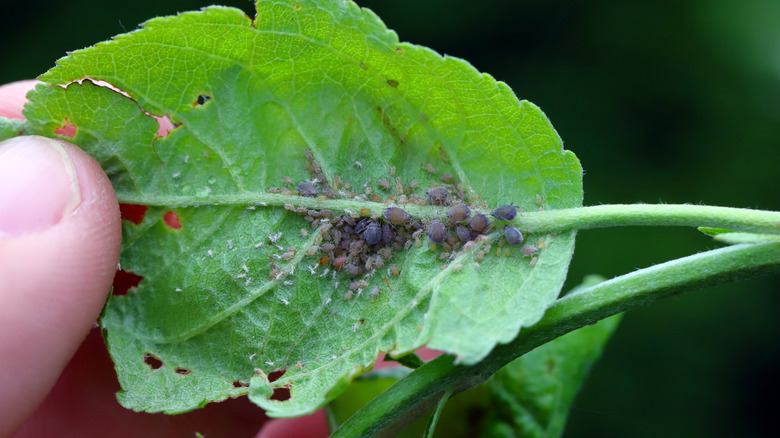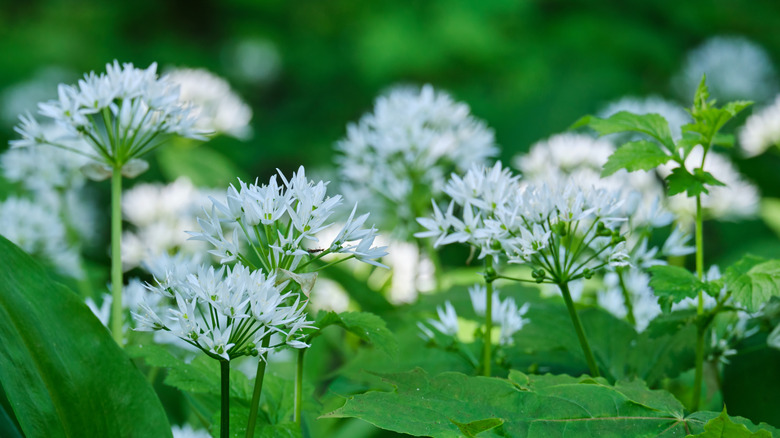The Easy Way To Repel Pests From Your Trees Without Harsh Chemicals
Common tree pests fall into three main categories: defoliators such as tent caterpillars that eat leaves, borers like emerald ash borer that attack the wood of the tree, and sap suckers like scale insects. While pesticides have been used for decades to eliminate these pests, integrated pest management has become a common way for arborists to use all of the tools in their toolbox, combining natural methods like barriers with chemical solutions. If you're loath to treat your trees with pesticides, growing companion plants such as garlic, elderberry, marigolds, and lavender is an easy way to repel pests.
Companion planting is the practice of growing different plant species together to provide benefits to one or both. For instance, planting basil and marigolds with tomatoes may reduce the thrip population and enhance the tomatoes' growth. Companion planting can improve the soil's health, suppress weeds, aid in pollination, and control pests naturally without pesticides.
Companion plants for trees can keep insects away in several ways, such as by attracting predators that prey on the pests, keeping their population low and protecting the tree in the process. Aside from the benefits to the environment, companion planting is a less labor-intensive form of insect control because beneficial plants last through the growing season without time-consuming tasks like maintaining a pesticide application schedule. However, there are a few companion planting mistakes everyone makes, like not considering that the tree and the companion should share the same soil and water needs.
How garlic repels pests from trees
Garlic (Allium sativum) repels Japanese beetles, aphids, and peach tree borers from trees with its strong scent. It can also be used in the form of a liquid solution poured on the soil around the tree or as a spray. The sulfur compounds in garlic will act systemically; they're taken up by the tree and spread through the trunk, branches, and leaves. Still, you may need to reapply the solution regularly. Garlic plants are usually pest-free, so you needn't worry about introducing new pests when you add it to your landscape. Fall is the perfect time to start planting garlic.
Elderberry (Sambucus canadensis) is effective against peach tree borers and aphids, the most common insect found on trees. Generally, aphids are not dangerous to trees, but they can be damaging in large enough numbers. In severe infestations, aphids can suck so much sap from trees that the leaves curl or the shoots and buds die back. They also produce honeydew, a sticky substance that coats anything it lands on, including your car and lawn furniture. Marigolds (Tagetes) are also effective against these pests because they attract ladybugs as well as parasitic wasps, two insects that help control aphids. Some people find the aroma of marigolds unpleasant, but most enjoy the fragrance of lavender (Lavandula). Insect pests like moths and flies, however, find it repellent. making it another good companion plant for trees.

